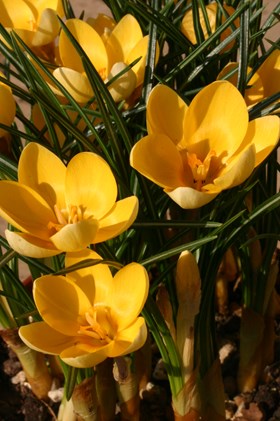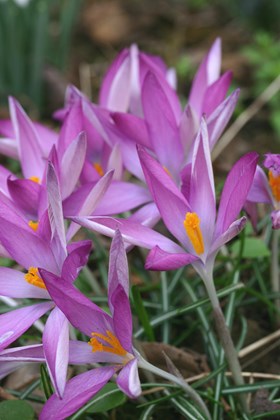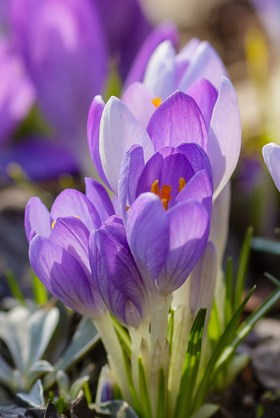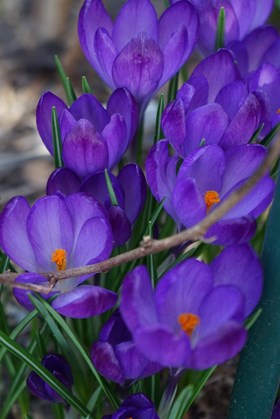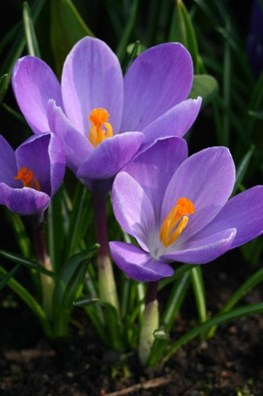Crocus
Understanding the Different Types of Crocus
Crocus are among the earliest and most welcome signs of spring, offering vibrant colour and charm when little else is flowering. While they may appear similar at first glance, crocus come in several distinct types—each with its own character, flowering time, and ideal use in the garden. Here's a helpful guide to the main groups:
Crocus chrysanthus – The Snow Crocus
Delicate and low-growing, these early bloomers often flower from late winter into early spring. Known for their vivid colours, often in yellows, blues, and bicolours, they are perfect for naturalising in rockeries, lawns, or along path edges. Their dainty blooms are especially beautiful when planted in drifts.
Crocus tommasinianus – The Naturaliser’s Favourite
Favoured by gardeners for its ability to multiply freely, this species is ideal for naturalising in grass or under trees. Flowering very early—often in February—and typically in shades of soft lilac or mauve, 'Tommy' crocus are also known for their resistance to squirrels and are particularly attractive to early pollinators.
Crocus vernus – The Giant Dutch Crocus
Larger in both flower and foliage, Crocus vernus varieties are among the most popular. Blooming in early to mid-spring, they produce bold, upright flowers in purple, white, yellow, and striped forms. Their sturdy nature makes them ideal for borders, containers, and eye-catching displays in lawns.
Autumn-Flowering Crocus – A Surprise Late in the Year
Not all crocus bloom in spring! A select few varieties flower in autumn, bringing unexpected colour to fading borders. These autumn crocuses often resemble their spring cousins, but flower from September to November, depending on the variety. Perfect for extending the crocus season and creating seasonal contrast.

Crocus vernus Vanguard
from £5.00

Crocus vernus Flower Record
from £5.00

